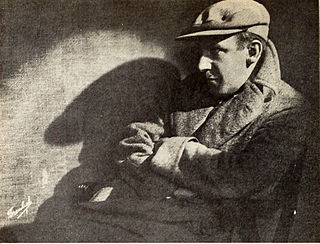
Tod Browning was an American film director, film actor, screenwriter, vaudeville performer, and carnival sideshow and circus entertainer. He directed a number of films of various genres between 1915 and 1939, but was primarily known for horror films. Browning was often cited in the trade press as "the Edgar Allan Poe of cinema."

Creighton Tull Chaney, known by his stage name Lon Chaney Jr., was an American actor known for playing Larry Talbot in the film The Wolf Man (1941) and its various crossovers, Count Alucard in Son of Dracula, Frankenstein's monster in The Ghost of Frankenstein (1942), the Mummy in three pictures, and various other roles in many Universal horror films, including six films in their 1940s Inner Sanctum series, making him a horror icon. He also portrayed Lennie Small in Of Mice and Men (1939) and played supporting parts in dozens of mainstream movies, including High Noon (1952), The Defiant Ones (1958), and numerous Westerns, musicals, comedies and dramas.
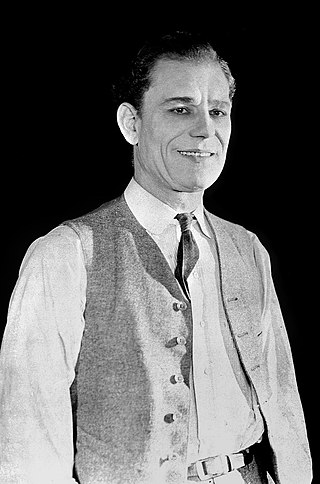
Leonidas Frank "Lon" Chaney was an American actor and makeup artist. He is regarded as one of the most versatile and powerful actors of cinema, renowned for his characterizations of tortured, often grotesque and afflicted, characters and for his groundbreaking artistry with makeup. Chaney was known for his starring roles in such silent horror films as The Hunchback of Notre Dame (1923) and The Phantom of the Opera (1925). His ability to transform himself using makeup techniques that he developed earned him the nickname "The Man of a Thousand Faces".

Jack Pierce was a Hollywood make-up artist best remembered for creating the iconic makeup worn by Boris Karloff in Frankenstein (1931), along with various other classic monster make-ups for Universal Studios.
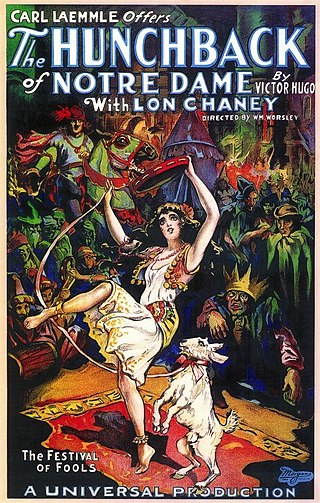
The Hunchback of Notre Dame is a 1923 American drama film starring Lon Chaney, directed by Wallace Worsley, and produced by Carl Laemmle and Irving Thalberg. The supporting cast includes Patsy Ruth Miller, Norman Kerry, Nigel de Brulier, and Brandon Hurst. Distributed by Universal Pictures, the film was the studio's "Super Jewel" of 1923 and was their most successful silent film, grossing $3.5 million. The film premiered on September 2, 1923, at the Astor Theatre in New York, New York, then went into release on September 6.
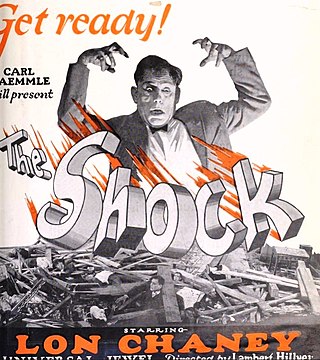
The Shock is a 1923 American silent drama film directed by Lambert Hillyer and starring Lon Chaney as a disabled man named Wilse Dilling. The film was written by Arthur Statter and Charles Kenyon, based on a magazine story by William Dudley Pelley. This is one of the rare Lon Chaney films in which his character ends up with the female "love interest." The film is readily available on DVD.

Joseph Pevney was an American film and television director.
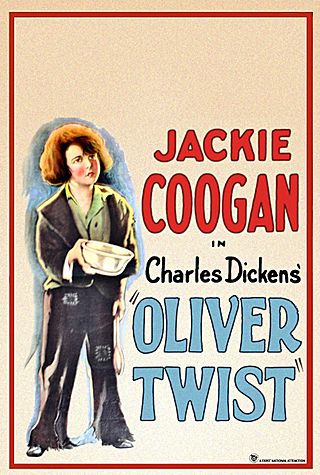
Oliver Twist is a 1922 American silent drama film adaptation of Charles Dickens' 1838 novel Oliver Twist, featuring Lon Chaney as Fagin and Jackie Coogan as Oliver Twist. The film was directed by Frank Lloyd. It was selected as one of the best pictures of 1922 by New York Times, Chicago Tribune and the Los Angeles Times. Walter J. Israel handled the costuming. Studio interiors were filmed at the Robert Brunton Studios in Hollywood. The film's tagline was "8 Great Reels that make you ask for more. Will Hays says Jackie Coogan Films are the sort the World needs." A still exists showing Fagin training his wards to be pickpockets.

Robert Marinus Lyden was a child actor in the 1950s.

La Casa del Terror is a Mexican Monster movie starring Lon Chaney Jr. and Mexican comedian Tin Tan. The film involves Casimiro (Tin-Tan), a night watchman in a Wax Museum, whose boss, Professor Sebastian, has been secretly draining his blood to use in his experiments in resurrection. A mummy who is stolen from an Egyptian sarcophagus is revived to life, and becomes a werewolf when moonlight hits him.

"Hammer Horror" is a song by Kate Bush, released as the first single from her second album Lionheart. It was released on 3 November 1978. The song peaked at No. 44 and spent 6 weeks in the UK Singles Chart. The parent album, Lionheart, was released on 10 November 1978 reached No. 6 on the UK Albums Chart.

John Chaney was a U.S. Representative from Ohio for three terms from 1833 to 1839.
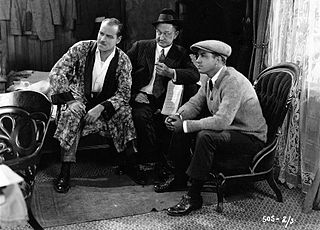
Wallace Ashley Worsley was an American stage actor who became a film actor and film director during the silent era. Over the course of his career, Worsley directed 29 films and acted in 7. He directed several movies starring Lon Chaney Sr., and his professional relationship with the actor was the best Chaney had, second to his partnership with Tod Browning.

The Trap is a 1922 American silent Western film directed by Robert Thornby and starring Lon Chaney and Alan Hale. It was released by Universal Pictures. The film was released in the United Kingdom under the title Heart of a Wolf. One working title for the film was Wolfbreed. The film was re-released in the U.S. in 1926.

Daredevil Jack is a 1920 American silent 15-chapter action film serial directed by W. S. Van Dyke and starring heavyweight champion Jack Dempsey and featuring Lon Chaney as a villain. The chapters were shown weekly between February and May 1920. The serial's working titles were Daredevil Durant or Dead or Alive. An incomplete copy of the film is housed in the UCLA Film and Television Archive.
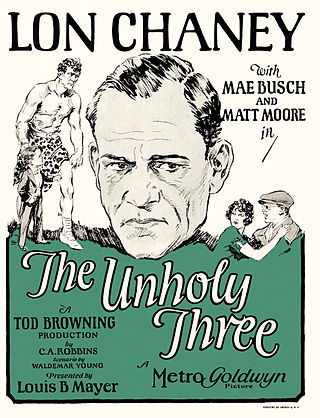
The Unholy Three is a 1925 American silent crime melodrama film involving a trio of circus conmen, directed by Tod Browning and starring Lon Chaney. The supporting cast features Mae Busch, Matt Moore, Victor McLaglen, and Harry Earles. The Unholy Three marks the establishment of the notable artistic alliance between director Browning and actor Chaney that would deliver eight films to M-G-M studios during the late silent film era.
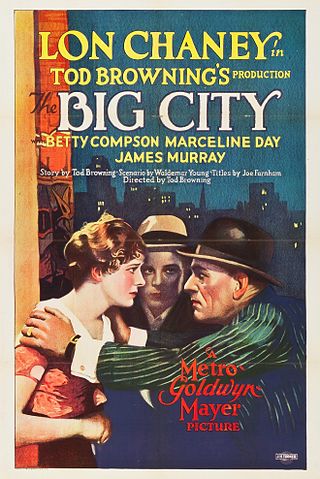
The Big City is a 1928 American silent crime film directed by Tod Browning and starring Lon Chaney. Waldemar Young wrote the screenplay, based on a story by Tod Browning. The film is now lost.
The Honor of the Family is a 1912 American silent short drama film produced by the Rex Motion Picture Company. The film is a melodramatic one between two brothers and a woman named Marja. Gerald admires the girl and warns his visiting brother, Claude, to leave her alone. Infatuated, Claude and Marja secretly marry before Claude returns to England with a promise to return for her. As the months pass, Marja becomes broken-hearted and attempts suicide, but ends up crippled for life. Claude dies and Gerald cares for Marja, even forging a letter to keep her spirits up. Marja comes to love Gerald and all is revealed on a later date.

Albuquerque is a 1948 American Cinecolor western film directed by Ray Enright and starring Randolph Scott, Barbara Britton, George "Gabby" Hayes, and Lon Chaney Jr. Based on the novel Dead Freight for Piute by Luke Short, with a screenplay by Gene Lewis and Clarence Upson Young, the film is about a man who is recruited by his corrupt uncle to inherit his freight-hauling empire in the southwest, and who eventually defects to his uncle's honest business rival.
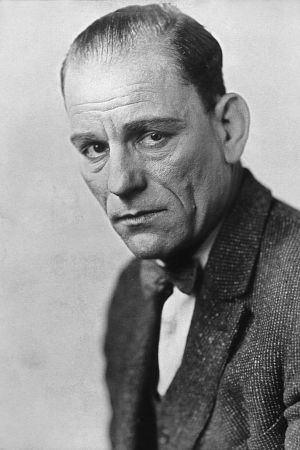
Lon Chaney was an American actor during the age of silent films. He is regarded as one of cinema's most versatile and powerful actors, renowned for his characterizations of tortured, sometimes grotesque and afflicted characters, and his groundbreaking artistry with makeup. Chaney is known for his starring roles in such silent horror films as The Hunchback of Notre Dame (1923) and The Phantom of the Opera (1925). His ability to transform himself using makeup techniques that he developed earned him the nickname "The Man of a Thousand Faces."



















